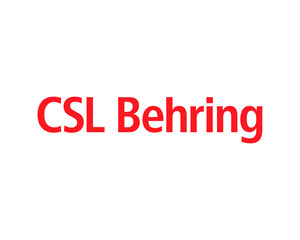New Model Compares Economic Value of Subcutaneous Immunoglobulin Therapy with Intravenous Immunoglobulin
Data presented at biennial ESID meeting reveal pharmacoeconomic benefits of switching from IVIG to SCIg in primary immunodeficiency
FLORENCE, Italy, Oct. 4, 2012 /PRNewswire/ -- Analysis using a new economic model demonstrates that higher dosing of subcutaneous immunoglobulin therapy (SCIg) is a cost-effective alternative to intravenous IgG replacement therapy (IVIG) in patients with primary immunodeficiencies (PID). The analysis shows higher doses of SCIg are less expensive than IVIG therapy because they translate into lower health care resource utilization including lower costs for hospital care. Results of the analysis were presented today at the 15th Biennial Meeting of the European Society for Immunodeficiencies (ESID).
"While previous data have shown that switching to SCIg increases patients' health-related quality of life, and higher IgG doses result in higher IgG trough levels and fewer infections, research into the pharmacoeconomic benefits of switching from intravenous to subcutaneous therapy is limited," said Elie Haddad, M.D., Ph.D., Professor, Department of Pediatrics and Microbiology and Immunology, Universite de Montreal. "This new model shows that, in addition to the benefits of improved clinical outcomes and increased patient satisfaction, SCIg also provides true monetary value across a wide range of dosing scenarios."
PID comprises a group of more than 150 diseases that affect the cells, tissues and proteins of the immune system. In people with PID, the immune system is absent or is functioning inadequately, leaving patients more susceptible to infection. Collectively, PID affects an estimated 10 million people worldwide. The incidence is estimated to be 1 in 10,000.
Analysis Design and Key Findings
Pharmacoeconomic modeling of IVIG versus SCIg therapy was conducted for one year as a means of analyzing the cost-effectiveness of switching from IVIG to SCIg across a wide range of dosing scenarios. A 65-kg PI patient treated with IVIG therapy was modeled for the switch to SCIg based on two studies in patients who had switched from IVIG to SCIg at 1:1 (EU study) or 1:1.5 dosing (US study).
Switching from IVIG to SCIg at a relative dosing of 1:1 (EU)
For a 65-kg PID patient switching from IVIG to SCIg at 1:1 dosing, the higher price of SCIg compared with IVIG results in additional net drug costs of EUR 1,216.8 - 4,056 per patient-year. Based on 13 IVIG infusions per year requiring travel to, and services at, a professional infusion center versus weekly SCIg injections administered at home, SCIg results in a savings of EUR 1,290 in infusion costs per patient-year. This results in a net savings of EUR 73 to net additional costs of EUR 2,766 per patient-year. Finally, taking into account costs associated with the time burden of having to travel to the professional center to receive IVIG infusions, at-home SCIg injections would translate into a net gain of EUR 213 per day, 13 times a year.
Switching from IVIG to SCIg at a relative dosing of 1:1.5 (US)
In modeling the same patient switching from IVIG to SCIg at 1:1.5 dosing, the net incremental cost per patient-year amounts to USD 18,598 – 21,958. Improved clinical outcomes observed with higher SCIg dosing (2.42 fewer infections, 3.28 fewer hospital days, and 24.3 fewer days of antibiotic use per patient-year) translate into a cost savings of up to USD 21,015 per patient-year. Cost savings related to at-home infusions versus in-center infusions (materials, health care resources, travel, etc) amount to USD 1,698 per patient-year. The net cost savings after switching from IVIG to SCIg at a 1:1.5 dosing amounts to USD 755 - 4,115 per patient, dependent on the cost of infections avoided.
About CSL Behring
CSL Behring is a global leader in the plasma protein biotherapeutics industry. Passionate about improving the quality of patients' lives, CSL Behring manufactures and markets a range of safe and effective plasma-derived and recombinant products and related services. The company's therapies are used in the treatment of immune deficiency disorders, hereditary angioedema, hemophilia, von Willebrand disease, other bleeding disorders and inherited emphysema. Other products are used for the prevention of hemolytic diseases in the newborn, in cardiac surgery, organ transplantation and in the treatment of burns. The company also operates one of the world's largest plasma collection networks, CSL Plasma. CSL Behring is a subsidiary of CSL Limited, a biopharmaceutical company with headquarters in Melbourne, Australia. For more information, visit www.cslbehring.com.
Contact:
Sheila A. Burke, Director, Communications & Public Relations
Worldwide Commercial Operations
CSL Behring
610-878-4209 (o)
484-919-2618 (c)
[email protected]
SOURCE CSL Behring
WANT YOUR COMPANY'S NEWS FEATURED ON PRNEWSWIRE.COM?
Newsrooms &
Influencers
Digital Media
Outlets
Journalists
Opted In





Share this article